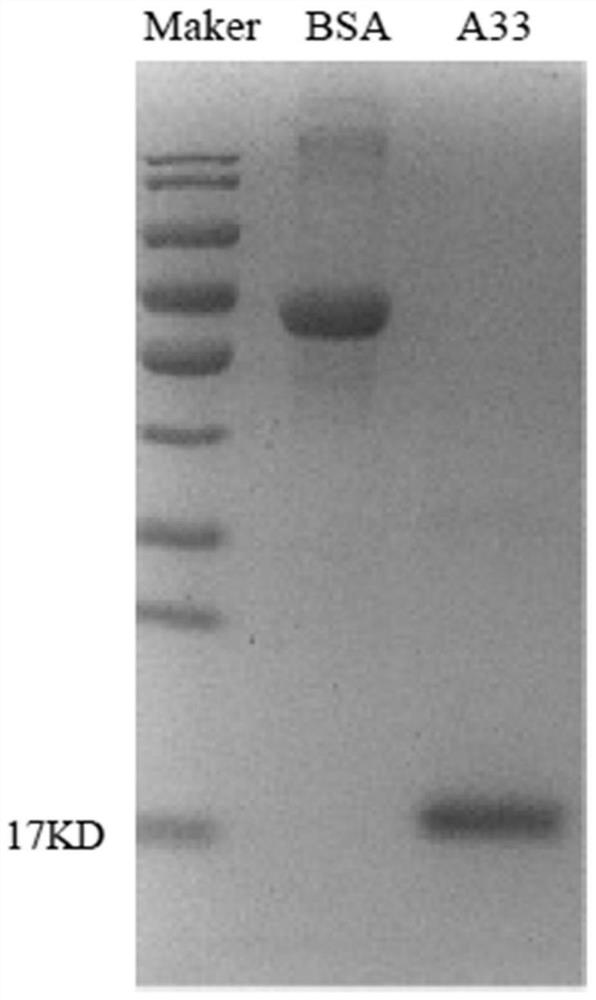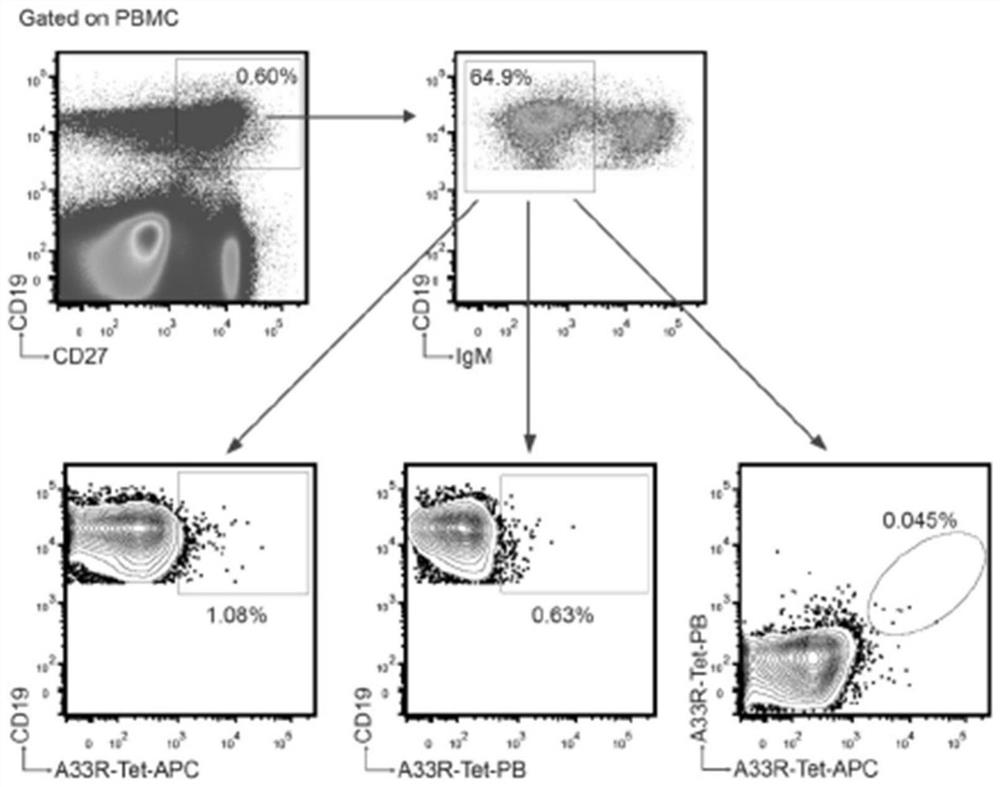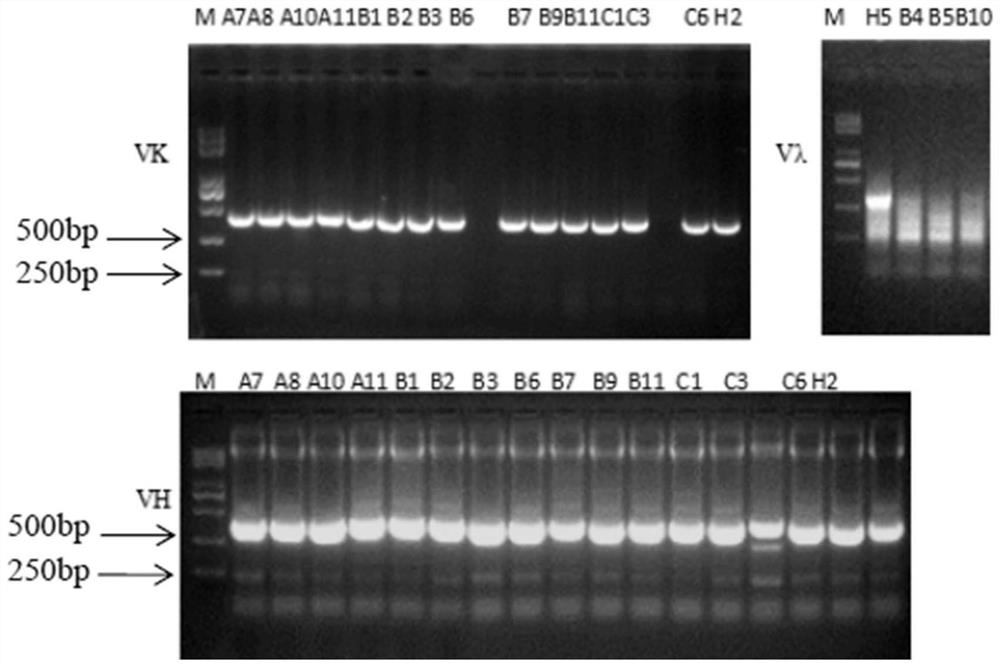Poxvirus human monoclonal antibody and application thereof
A monoclonal antibody, pox virus technology, applied in the field of medicine, can solve the problems of lack of cytotoxicity, reduced efficacy, allergic reactions, etc., and achieve the effects of reducing heterogeneity, universal applicability, and increasing accuracy
- Summary
- Abstract
- Description
- Claims
- Application Information
AI Technical Summary
Problems solved by technology
Method used
Image
Examples
Embodiment 1
[0037] Expression and Purification of Vaccinia Outer Membrane Protein A33 Protein in Orthopoxvirus
[0038] In view of the role of A33 in poxvirus infection, we compared the extracellular amino acid sequences of A33 in smallpox virus, mousepox virus, soybean sprout virus, and monkeypox virus. A33 was also demonstrated to be an important target of natural antibody responses against poxviruses.
[0039] Then select pET28a (+) as the expression vector, and select NcoI and BamHI as the insertion site of the A33 protein gene between the two restriction sites to obtain the recombinant plasmid, and transform the recombinant plasmid into BL21 Escherichia coli competent cells, When the OD600 of the bacterial solution is between 0.6-0.8, IPTG is added for induction. After about 3-4 hours, the inclusion bodies are collected, and then the inclusion bodies are refolded by dilution method. Finally, the renatured inclusion bodies are purified with a Ni column and passed through SDS-PAGE ide...
Embodiment 2
[0054] Performance testing of single chain antibodies
[0055] (1) ELISA detection of binding of single chain antibody to A33
[0056] In order to verify whether the screened antibody specifically binds to A33 and whether it is functional, it is verified by ELISA detection and in vitro neutralization test.
[0057] The single-chain antibody plasmid was transfected into 293T cells, and the supernatant was collected after 24 hours, and its expression was detected by Western assay, as shown in Figure 4 . Then dilute the A33 protein with the coating solution, coat the 96-well plate, and detect its binding status through the supernatant of the single-chain antibody, and screen the H2 single-chain antibody from it, such as Figure 5 shown.
[0058] (3) Combination of surface plasmon resonance detection and A33
[0059] Surface plasmon resonance analysis was performed using a Biacore T100 (Biacore Inc).
[0060] The specific steps are as follows: firstly, immobilize the H2 sing...
Embodiment 3
[0066] Expression and purification of H2 IgG antibody
[0067] The signal peptide sequence SEQ ID NO.9 and the light and heavy chain variable region sequence SEQ ID NO.1, SEQ ID NO.3 of H2 and the constant region sequence SEQ ID NO.7, SEQ ID NO.8 of H2 are spliced together to construct Intact H2 IgG form. Transfect the constructed H2 IgG plasmid into 293F cells, collect the cell supernatant after 3 days of culture, purify the H2IgG antibody by protein A, and finally verify the purification by polyacrylamide gel electrophoresis, as shown in Figure 9 shown.
PUM
 Login to View More
Login to View More Abstract
Description
Claims
Application Information
 Login to View More
Login to View More - R&D
- Intellectual Property
- Life Sciences
- Materials
- Tech Scout
- Unparalleled Data Quality
- Higher Quality Content
- 60% Fewer Hallucinations
Browse by: Latest US Patents, China's latest patents, Technical Efficacy Thesaurus, Application Domain, Technology Topic, Popular Technical Reports.
© 2025 PatSnap. All rights reserved.Legal|Privacy policy|Modern Slavery Act Transparency Statement|Sitemap|About US| Contact US: help@patsnap.com



